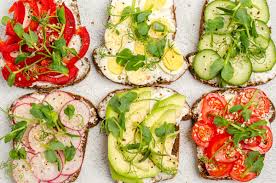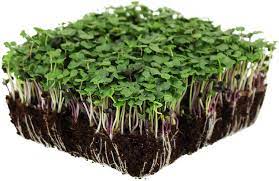What are Microgreens and What Do You Do with Them?
 Microgreens have become increasingly popular on restaurant menus, in salads at home, and in products such as vitamins and supplements. But what exactly are they?
Microgreens have become increasingly popular on restaurant menus, in salads at home, and in products such as vitamins and supplements. But what exactly are they?
What are Microgreens?
Microgreens are a more concentrated form of greens that are harvested when they're only days old. This means that microgreens have a lot more nutrients than their fully grown counterparts since the plants haven't been sitting around for weeks or months before being harvested, and because microgreens grow so quickly, their flavor is also much sharper.
Some microgreen varieties have only been grown in limited quantities to date and are relatively new to the market. But other varieties have been around for years and are already very popular. Some examples of this include arugula, kale, spinach, cabbage, and beets.
Incorporating Microgreens into Your Diet
When it comes to eating microgreens, there are a lot of options. Some great ways to incorporate them into your meals are:
- In salads made with your favorite greens or lettuce. Add your favorite dressing, and you have a quick meal packed with nutrients you won't find in fast food. You can also add chopped fruit and lean proteins such as grilled shrimp or grilled chicken for extra flavor and nutritional benefits.
- As toppings on your favorite sandwiches or wraps. If you get tired of your usual bacon, lettuce, and tomato, try switching to bacon, tomatoes, and radish or arugula microgreens instead. Sure, it messes up the acronym, but you'll still be able to hold the sandwich with your hands. You'll also have extra nutrients in the meal as well as a lighter taste overall.
- In muffins or cookies. Rather than frosting your favorite muffin recipe, try adding anise microgreens instead. They'll give your muffin a subtle licorice taste but still provide you with all the healthy nutrients you're looking for in a treat.
- In any dish that calls for fresh herbs. Microgreens are great in pesto since they're packed with high amounts of antioxidants that can reduce the amount of fat in pesto. Try dehydrating them so they'll last longer in the pantry. On pasta dishes, add them to any sauce before you add it to the pasta.
So, what are you waiting for? Before you know it, these little guys will be incorporated into more and more dishes at restaurants and made into more and more products. And with the growing popularity of microgreens, it's safe to say that there's only going to be more demand for them in the future.

